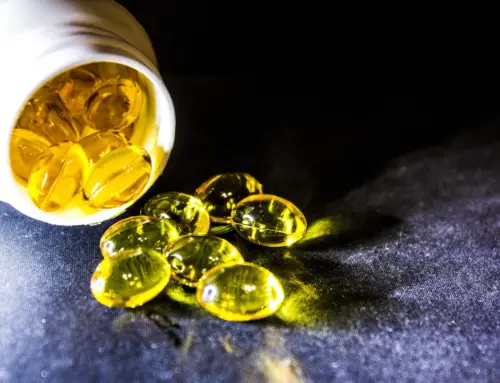Changing the fluidity of cell membranes alters their physical properties, such as permeability and protein activity. This change can drastically alter cell signaling and plays a major role in increasing membrane permeability of cancer cells, making them more susceptible to immunologic and chemotherapeutic killing.3 EPA, however, has much less effect on membrane fluidity than DHA.4
It has also been shown that a greater incorporation of DHA into cell membranes results in dramatically less susceptibility to lipid peroxidation and oxidative stress in cells, especially neurons.5 Although many view the brain as a stable structure that changes little after adolescence, it is in fact always in a state of flux, not only by forming millions of new nerve connections, but also by replacing and altering its biochemical makeup, especially membrane lipids. Connected with this constant turnover of brain lipids are the phospholipase enzymes, which can release arachidonic acid and DHA from the cell membrane.6 Dietary changes can therefore drastically alter brain lipids, which can significantly alter brain function, even worsening neuropsychiatric disorders.7
Furthermore, there is evidence that as we age, the distribution of DHA in the brain changes.8 For example, during infancy the highest levels are found in the striatum (associated with motor control) and are lower in the hypothalamus (linking the nervous and endocrine systems) and hippocampus (associated with memory). In adults, the highest levels are in the cortex (essential to cognition) and lowest in the medulla (crucial for autonomic function). With aging, the highest levels are in the cortex and cerebellum (involved in motor control). An example of this regional specificity was seen in a recent study when scientists restored dietary DHA to rats that had been deprived of the nutrient. They found that all areas of brain DHA were restored after 12 weeks, except for the medulla, which recovered only 62% of its DHA.8 These findings therefore provide plentiful evidence that consuming enough DHA may be essential for upkeep of the adult brain.
References
1. Stillwell W, Shaikh SR, Zerouga M, Siddiqui R, Wassall SR. Docosahexaenoic acid affects cell signaling by altering lipid rafts. Reprod Nutr Dev. 2005 Sep;45(5):559-79.
2. Stillwell W, Wassall SR. Docosahexaenoic acid: membrane properties of a unique fatty acid. Chem Phys Lipids. 2003 Nov;126(1):1-27.
3. Stillwell W, Ehringer W, Jenski LJ. Docosahexaenoic acid increases permeability of lipid vesicles and tumor cells. Lipids. 1993 Feb;28(2):103-8.
4. Brown ER, Subbaiah PV. Differential effects of eicosapentaenoic acid and docosahexaenoic acid on human skin fibroblasts. Lipids. 1994 Dec;29(12):825-9.
5. Zerouga M, Jenski LJ, Stillwell W. Comparison of phosphatidylcholines containing one or two docosahexaenoic acyl chains on properties of phospholipid monolayers and bilayers. Biochim Biophys Acta. 1995 Jun 14;1236(2):266-72.
6. Horrobin DF, Bennett CN. New gene targets related to schizophrenia and other psychiatric disorders: enzymes, binding proteins and transport proteins involved in phospholipid and fatty acid metabolism. Prostaglandins Leukot Essent Fatty Acids. 1999 Mar;60(3):141-67.
7. Horrobin DF. Interactions between lipid metabolism and schizophrenia: the biochemical changes which may have made us human. Lipids. 1999;34 SupplS255.
8. Xiao Y, Huang Y, Chen ZY. Distribution, depletion and recovery of docosahexaenoic acid are region-specific in rat brain. Br J Nutr. 2005 Oct;94(4):544-50.










Leave A Comment
You must be logged in to post a comment.